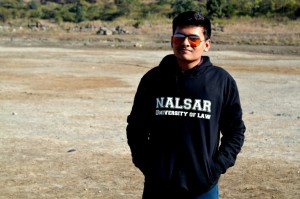In this blog post, Abhiraj Thakur, a 1st-year student of NALSAR University of Law, writes about how the Indian judiciary has dealt with the cases of fake encounters in the country. The post also talks about the initiatives taken by the state to curb the menace of power abuse by state officials.
Ever since man started his struggle for survival on this planet, he has resorted to numerous ways both to defend himself and his loved ones. He has appointed armies to defend his land and his people. All most every nation today holds its army and other security forces to fend off internal and external threats to its land and people. The state of India has suffered from both internal and external threats to its security for a long time, and so maintains a vast army, Navy, and Air Force along with other secondary security forces to counter these threats. These forces resort to various means to eliminate a threat; one such mean is ‘encounter’. A simplistic definition of an encounter, relevant in this case would be “a sudden confrontation between anti-national and anti-social elements and security forces of a nation.”
In the last two to three decades, numerous incidents have taken place in our country which were described by the police authorities as “encounters”. These “encounters” were done without proper justification and evidence to prove so and was done without following the due process of law. Some of the well-known cases are of Ishrat Jahan and Sohrabuddin Sheikh. The problem isn’t that there are certain members of society who have been given the responsibility to guard and protect everyone else and given firearms to do so, the problem is the development of that responsibility into an entitlement of being able to take steps not legitimized by the government or the law in the name of protection of the society regardless of whether it amounts to taking someone innocents’ life or not.
Judicial Approach on ‘Fake Encounters.’
 The Indian Judiciary has had ample opportunities to deal cases of fake encounters in past. About thirty years ago, due to lack of awareness of rights among the citizens the cases registered of fake encounters were negligible, however with the gradual awareness of rights among the common people India has seen an upsurge in the registration of cases of fake encounters. The general notion that ‘police is for the betterment of the people and can resort to violent acts means whenever it thinks fit as it is their duty[1]‘ has been dismantled by Indian judiciary that has above all upheld the ‘rule of law in the country.’
The Indian Judiciary has had ample opportunities to deal cases of fake encounters in past. About thirty years ago, due to lack of awareness of rights among the citizens the cases registered of fake encounters were negligible, however with the gradual awareness of rights among the common people India has seen an upsurge in the registration of cases of fake encounters. The general notion that ‘police is for the betterment of the people and can resort to violent acts means whenever it thinks fit as it is their duty[1]‘ has been dismantled by Indian judiciary that has above all upheld the ‘rule of law in the country.’
The Supreme Court in the case of Prakash Kadam and Ors. V. Ramprasad Vishwanath Gupta and Anr.[2] held that the policemen cannot be excused for committing murder in the name of “encounter” solely on the pretext that they were following orders. The court had also observed that the “encounter” philosophy is a criminal philosophy and as the police officers and staff were engaged by some private persons to kill their opponents they had effectively acted as contract killers and encounter cannot justify their actions.
Investigation of Fake Encounters
For a nation having multiple of ethnic identities and a recent rise in the right wing politics, Anti-social activities have grown at an alarming rate over the last two decades and as a result has increased the cases of encounters. Though encounters were becoming rampant in the country, Indian law was devoid of any specific procedure to investigate the cases of encounters and further there was never felt any need to investigate encounters as the steps taken by security forces was considered to be right. In this regard, the role of the Indian judiciary has been commendable.
Why Should There be an Investigation of Encounters?
 The landmark case in this regard is Satyavir Singh Rathi, Assistant Commissioner of Police and Ors. V. State through Central Bureau of Investigation[3] where the police had surrounded a car and fired indiscriminately at it till two of the occupants inside were dead, and the third was grievously hurt. In the case, the court had held the police personnel punishable under Section 302/34 of the IPC and rejected their defence as they had found it not to be in good faith or in due discharge of their duty. The court reprimanded the state government for not initiating any investigation of the case.
The landmark case in this regard is Satyavir Singh Rathi, Assistant Commissioner of Police and Ors. V. State through Central Bureau of Investigation[3] where the police had surrounded a car and fired indiscriminately at it till two of the occupants inside were dead, and the third was grievously hurt. In the case, the court had held the police personnel punishable under Section 302/34 of the IPC and rejected their defence as they had found it not to be in good faith or in due discharge of their duty. The court reprimanded the state government for not initiating any investigation of the case.
Further in the case of D.K. Basu v. State of West Bengal[4] Court acknowledged the question of why to check abuse of police power. It had held that transparency of action and accountability were two safeguards that the court has to insist upon. It is also important to develop work culture, training and orientation of the police force consistent with human values. Efforts were thus needed to change the law with regard to the investigation of encounter cases, and active attempt needs to be made to change the attitude of the people with regard to encounter cases, there is a need to have an investigation.[5]
No civilised nation of the world today can have unchecked and un-monitored police action in the country. In a case, Supreme court further remarked ‘Fake encounters look like state sponsored terrorism for the fact that there is no lawful justification for the extra judicial steps taken by the police departments and “because police can never kill a person just because he is a dreaded criminal”[6].
Reaching a Landmark: Peoples’ Union for Civil Liberties v the State of Maharashtra
Taking note of the increasing abuse of state power in the form of Fake encounter incidents, PUCL a non-political organisation filed a PIL in the Bombay high court for determining procedures to investigate encounter cases in the country. Not satisfied with High Court verdict the case went to Apex Court on a special leave petition (SLP).
The main contention of the petitioners was that it is possible that some of the persons who were shot dead were criminals, but there are also some who were innocent and to prove the same they highlighted the case of Aby Sayma alias Javed who was a victim of the encounter stage managed by the police as alleged by them. PUCL submitted that in every encounter in which the criminal sought to be arrested died and all that the police said was that the criminal killed had tried to assault the police officer and was thus shot down and declared dead at the hospital. Also was submitted that the encounters violate the right to life guaranteed under Article 21 of the Constitution and thus it is necessary to direct an independent inquiry into these incidents.
The Supreme Court inter alia dealt with the determination of procedure to investigate encounter cases and held that the need to conduct independent investigations into encounters and to have proper guidelines advising the same is extremely important. The court also recognized the fact that the Police in India has a difficult and delicate task upon themselves to perform because of the strong presence of crime in the country.
Guidelines Laid Down for Investigation
Today there are several guidelines that need to be followed before committing an encounter and during the investigation of the encounter. Some of the noteworthy guidelines are:
- Cautions before an encounter: It is now mandatory that whenever police or any other security agency receives any tip off or intelligence regarding movement of criminals pertaining to the commission of an offence of grave nature, the information has to be reduced into either electronic of written form.
- Post-encounter measures: Once an encounter is done, Independent Investigation into the matter has to be taken up by the CID or a police team of another police station under the supervision of a senior officer. The following documents need to be gathered in course of investigation:
- For identification of the victim, a coloured photograph
- blood stained earth, hair fibres, and such other evidentiary material have to be recovered and preserved
- There has to be an identification of the scene witnesses (including statements of the personnel involved)
- After the encounter has finished, the personnel concerned need to surrender the weapons used for ballistic analysis. The procedure needs to be cautiously followed with regard to Article 20(3) of the Indian Constitution that gives the right against self-incrimination (Being witness against oneself) to every citizen.
- Judicial relief: A Magisterial inquiry under Section 176 is now mandatory in all cases of death occurring in Police Firing and subsequently a report needs to be sent to the Judicial Magistrate having jurisdiction under Section 190.
- Human Rights Approach: A report containing all the relevant Information of incident needs to be sent to NHRC (National Human Rights Commission) or SHRC (State Human Rights Commission) immediately, though their involvement is conditional unless there are some serious discrepancies in the investigation.
- Humanitarian Assistance: Medical Aid must be provided to injured Criminal/Victim and his/her statement must be recorded by Magistrate or Medical Officer, accompanied by a certificate of fitness.
- Relief for victim’s family: The most remarkable relief provided by the guidelines for the families of the victims were that If the family of the victim reasonably believes that these guidelines have not been adhered to, they can lodge a complaint to sessions judge having jurisdiction over the area of the incident.
An efficient judiciary always works on the principle of checks and balances, where every organ of the state keeps a check on the other at the same time being checked by others. With reference to encounter cases, we see the judiciary has ensured ample safeguards to curb the misuse of force by the state. Today when countries like USA and UK have specific legislations to deal with the investigation of encounters, there is no legislation in India should concern all of us. Also, though there may be cases of abuse of power but we must always be indebted to our security personnel, they are there for us.
[divider]
Footnotes
[1] Mandeep Tiwana, National Human Rights Commission Guidelines on Encounter Deaths March 29,1997, and Revised Guidelines December 2, 2003, Human Rights and Policing: Landmark Supreme Court Directives & NHRC Guidelines, 36, (2005).
[2] (2011) 6 SCC 189
[3] (2011) 6 SCC 1
[4] (1997) 1 SCC 416
[5] Para 29, page 433, D.K. Basu v. State of West Bengal, (1997) 1 SCC 416
[6] Om Prakash v. State of Jharkhand, (2012) 12 SCC 72
 Serato DJ Crack 2025Serato DJ PRO Crack
Serato DJ Crack 2025Serato DJ PRO Crack











 Allow notifications
Allow notifications



